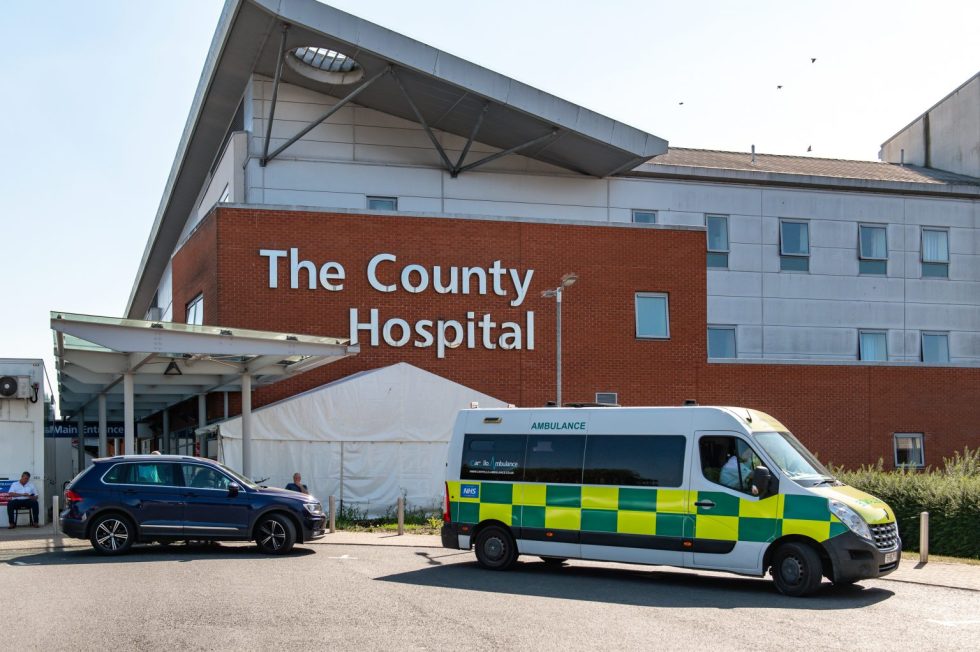Following an inspection of the Emergency Department at Hereford County Hospital, the Care Quality Commission (CQC) has recognised its staff as very caring, although it gave the department an overall “Requires Improvement” rating due to concerns over patient safety.
CQC inspectors made an unannounced three-day visit to the Emergency Department on December 5-7, and followed up with a further one-day inspection on December 20.
The CQC’s report, which is published today, Wednesday, February 28, frequently refers to overcrowding and “difficult” conditions in ED caused by the limited size of the department and large number of patients.
Off-loading of ambulances is prioritised due to the risks for patients who are experiencing an emergency and need an ambulance, and while ambulance hand-over performance is better at the County Hospital than the regional average, this can lead to overcrowding in the department.
The inspectors noted that the layout and “significant limitations with space” meant that it was difficult to hold confidential conversations with patients, and despite staff members’ best efforts, patients’ privacy and dignity were sometimes compromised.
Their report also says that crowding in the department resulted in patients being cared for in inappropriate areas and a poor environment which made it difficult for staff to keep an eye on patients in the waiting room.
The Trust was also criticised for a high reliance on agency staff and computer systems which were “not fit for purpose.”
However, they reported that staff were kind and trying to provide good care to patients, describing them as “discreet and responsive” treating patients in a “respectful and considerate” manner.
In turn, patients told the inspectors that staff treated them well with kindness.
Jane Ives, Wye Valley NHS Trust’s managing director, said the inspectors had highlighted a number of issues the Trust was aware of and had been already addressing.
“Their return visit confirmed progress in a number of areas with improved governance, improved child specific training for staff, improvements to the children’s area, and an increase in the number of clinical staff, which included the introduction of a nurse and healthcare assistant to monitor patients in the waiting room 24 hours a day.”
Jane added that the limited size of the department and the increasing number of patients attending were causing congestion in the department. This was being more widely impacted by patients in the Trust’s acute and community beds who are medically fit for discharge, but can’t be sent home for a variety of reasons.
The congestion on the wards delays the transfer of patients out of ED onto wards which compounds the problem.
Prior to the inspection the Trust was developing a new dashboard and since the inspection this has been installed and gives staff a clear overview of patients’ status on their care journey to help manage patient flow through the department.
The Trust is also working hard to create a culture where “virtual wards” are normalised.
Virtual wards allow the Trust to care for patients in their own homes. These, combined with medical, surgical and frailty same day emergency care areas – which treat patients on the day they come in and then discharges them, avoiding patients having to spend a night on a hospital ward – are helping to ease overcrowding.
“It’s clear we are not where we want to be, and the ‘Requires Improvement’ rating is disappointing, particularly for our hard working ED staff,” said Jane.
“We’ve got a team of utterly dedicated and professional staff members in our Emergency Department and they make a positive difference to the lives of hundreds of people every day.
“While we have previously adapted the physical layout of the department, there are limitations as to what we can do due to its size. Nevertheless, we are doing everything within our powers to ensure we provide safe care to our patients under extraordinary pressure.
“This includes looking at the flow of patients throughout the hospital and working closely with our health and care partners in Herefordshire to reduce the length of time medically fit patients have to wait for support at home to be discharged.
“We are looking at the CQC report in detail – and look forward to welcoming the inspectors back to demonstrate the improvements we are making.”




